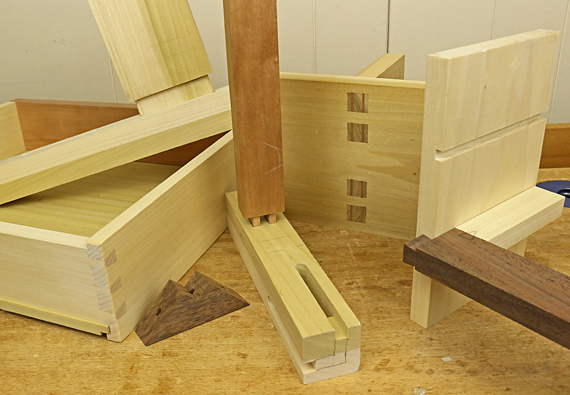
When designing and making a particular joint or subassembly, an actual sample of it is a great aid to spatial thinking. I keep a bunch of these brain helpers in the shop, including various mortise and tenon configurations, sliding dovetails, a section of a web frame, some curved legs, and, of course, a drawer or two. Most are unglued to permit study.
In the design phase of a project, when considering proportions, thicknesses, and surface relationships, the models help in a way that drawings cannot. Later, they are useful when strategizing construction methods. They are particularly helpful if it’s been a while since I last incorporated such an assembly into a piece.
A reference model does not have to be very neat or even complete. Most likely it will be one section of an assembly or the critical parts that are just enough to direct your thinking. I often write notes and dimensions on the reference models, especially if there’s something that I’m not likely to notice later. Basically, give yourself all the help you can; woodworking is hard enough already.
Accumulate the models from practice joints, experiments, or extras from a past project. It’s amazing how some in my shop of have aged and then jog my memory when needed. “Oh, that’s how that frame went together,” or whatever, in some project from the past. A piece that you completed long ago may be unavailable to you now but even if it is, you can’t disassemble it.
Since virtually all of my woodwork is one-of-a-kind, the reference models serve as brain assistants, not formulas. I benefit from my former efforts but I’m still thinking things through as they pertain to the project at hand. I really enjoy that combination!
If accumulating reference constructions is not a woodworking habit of yours, consider giving it a try. I think you’ll find it pays off.

